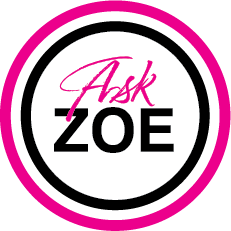You may be wondering why we think you would like to know what marketing lead generation means.
Well, we recently discussed the importance of calculating your ROI (return on investment) to measure success in your business growth and your marketing efforts.
We were then asked the question on what marketing lead generation means, in reference to optimizing your results and effort.
Marketing lead generation is the process of identifying and attracting potential customers or “leads” who have expressed interest in a product or service offered by a business.
The primary goal of lead generation is to build a pipeline of prospective customers who can be nurtured and converted into paying customers which maximizes your results, i.e., your ROI.
This process is a crucial part of your marketing strategy, as it helps drive sales and revenue growth for your own business strategy.
7 Key Elements of marketing lead generation
Here are seven key aspects of marketing lead generation:
Identification of Prospects: Lead generation starts with identifying individuals or businesses (i.e. your target audience) who might have a genuine interest in what your business offers. This can be done through various methods, including market research, target audience analysis, and data collection.
Attracting Interest: Once potential prospects are identified, marketing efforts are used to attract their interest. This may involve content marketing, advertising, social media, email marketing, search engine optimization (SEO), and other strategies to make the target audience aware of the business’s products or services.
Offering Value: Using incentives or valuable content to entice potential leads to engage with the business. This could be in the form of downloads, e-books, webinars, free trials, discounts, or other offers that provide something of value to the lead.
Lead Capture: A crucial part of lead generation is capturing the contact information of potential leads. This typically involves forms on websites, landing pages, or other methods where individuals can provide their contact details in exchange for the offered value.
Nurturing Leads: Not all leads are immediately ready to make a purchase. Lead nurturing involves building and maintaining a relationship with leads over time. This may involve personalized email marketing, content sharing, and other tactics to keep the leads engaged and informed. At this point it is important to consider your customer journey to evaluate how many touch points your ideal customer needs to convert them from prospect to lead.
Qualification: Leads are often categorised into different segments based on their level of interest and readiness to buy. Leads can be categorised as “marketing-qualified leads” (MQLs) or “sales-qualified leads” (SQLs) depending on their stage in the buying process.
Measurement and Optimisation: The success of lead generation efforts is measured through various metrics, such as conversion rates, cost per lead, and return on investment (ROI). Marketers continually analyse and optimise their strategies to improve the effectiveness of lead-generation campaigns.
Ultimately marketing lead generation is a dynamic and ongoing process that requires a well-planned strategy, effective execution, and the use of various marketing channels and technologies to connect with potential customers and move them through the sales funnel and boost your results (ROI) for your business.
If Ask Zoe can help you with your marketing lead generation efforts, please take a look at our service page: Services – Ask Zoe







About The Author: Zoe Wadsworth
Award Winning Business Consultant of Ask Zoe.
More posts by Zoe Wadsworth